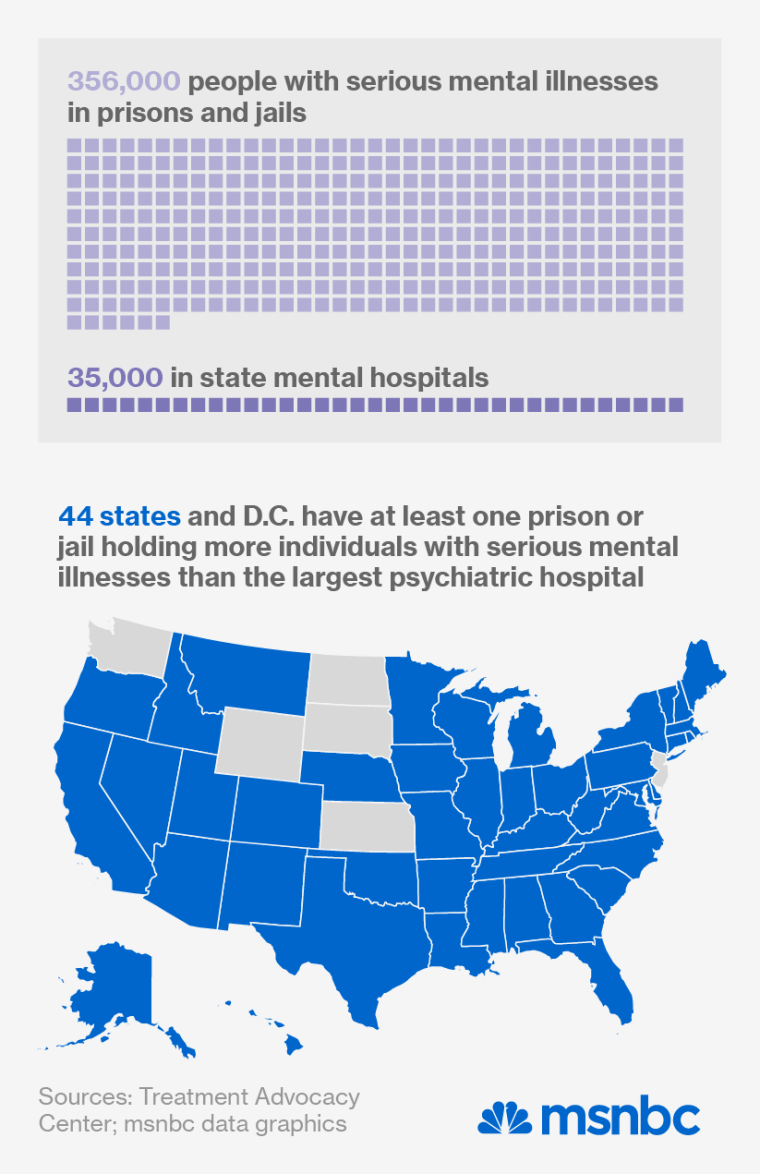America’s prisons house ten times more people with mental illnesses than its hospitals, according to a new report.
The report, released Tuesday by the Treatment Advocacy Center, found that state prisons and county jails house approximately 356,268 people with mental illnesses, while state mental hospitals hold only 35,000. The disparity is also a nationwide problem – only six states have psychiatric hospitals with more people in them than a prisons or jail.
Prisons, according to the report, have become the nation’s “new asylums.” The number of beds available at hospitals for mental health patients has been dropping for decades. And as the population of incarcerated people has exploded, so has the number of people with serious problems. A 2012 report, also by TAC, found that state mental health agencies cut nearly 10% of their available beds between 2009 and 2012.

The report provided a breakdown of the number of mentally ill prisoners in each state’s correctional facilities, the laws governing treatment, and examples of how inmates are treated. Among others, they include a Mississippi prison designed for mentally ill inmates, overrun by rats, where “some prisoners capture the rats, put them on makeshift leashes, and sell them as pets to other inmates. There was also a case in which a schizophrenic man spent 13 of 15 of his years in prison in solitary confinement.
In addition to a dearth of resources outside of the criminal justice system, treatment inside has not kept up with that population increase, according to the report.
“Inmates who linger untreated in jails and prisons become increasingly more vulnerable to their symptoms and the resulting victimization or violence,” the report read. Dr. E. Fuller Torrey, founder of the Treatment Advocacy Center and lead author of the study, said in a statement, "The lack of treatment for seriously ill inmates is inhumane and should not be allowed in a civilized society.”
Going without treatment can also lead to prison sentences some people might not have received otherwise. An example comes from South Carolina where a Navy veteran in jail on minor charges became manic and threatened a judge and two police officers and spit and threw excrement at guards trying to give him medicine and food. After those incidents, he was sentenced to six years in prison.
Many fixtures of modern prisons can make already sick inmates worse. In February, a Senate panel called for an end to the use of solitary confinement for mentally ill individuals, pregnant women, and juveniles. Human rights groups argue that extended solitary confinement constitutes torture.
The report’s authors admit that reducing the number of mentally ill inmates in jails would have to come along with a massive recommitment to high-quality mental health care in hospitals -- a tall order in this age of austerity. In the interim, they advocate for more outpatient treatment and jail diversion programs, as well as more planning, both when inmates enter the system and leave it.
In the end, however, the report's findings are likely to fit well with arguments from other prison reform advocates based around cost. Studies on the cost of incarcerating mentally ill people, the study said, "would provide public officials with a more accurate basis for making mental illness treatment policy and unmask cost savings that are illusory." One recent study by the Urban Institute has shown prison costs exploding, and another found that 17 states stand to save up to $4.6 billion through reducing their prison populations.
